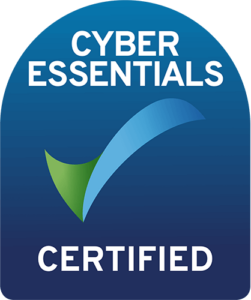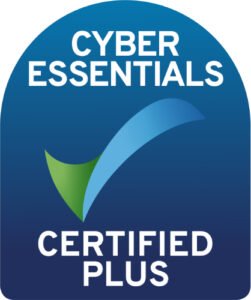Thinc insights
It’s time to update your Sage 200 version – so, what happens next? Let us take you through the key steps.
Are you running the latest version of Sage 200 for your organisation? If not, you may be missing out on helpful features – and risk losing the core support Sage provides.
Ensuring you have the most up-to-date version is the surest way to ensure you’re getting the most from Sage 200. But if you’ve not updated in a while, you may find that there’s more to consider than the system alone.
In this guide, we’ll walk you through all you need to know about how to update Sage 200 effectively.
Every year Sage releases two updates to its Sage 200 software: a major update (R1), followed by a minor one (R2) later in the year. At the time of writing, the current release of Sage 200 is 2024 R1 – with 2024 R2 expected this autumn.
The 2024 release has brought with it one of the most exciting developments we’ve seen in the history of Sage 200. The introduction of Web Screens has brought true flexibility to Sage 200 users, allowing you to access its key features from their browser across any device and location.
If you’re using Sage 200 Standard – good news! Your updates will happen automatically. But if you’re using Sage 200 Professional, then you’ll need to pay attention to the release lifecycle.
Updating Sage 200 is not just about bringing the latest new features to your users – though this is certainly part of it. There are more critical reasons to do so, such as receiving vital updates that ensure your systems meet the latest standards of compliance.
Another reason to update Sage 200 is to ensure the version you have is supported. Official support from Sage extends to the previous two iterations – so, as 2024 R2 rolls out, the releases from 2023 and 2022 will remain in support. For anything earlier, support will be depreciated.
Updating to the latest version is the best way to make sure you are getting the most from your system, are fully compliant, and don’t end up without support for any length of time.
Checking what version of Sage 200 you’re running is as easy as a couple of clicks.
The key thing then is to be proactive. Thinking about what needs to be done will alleviate any headaches that arise when the time comes to migrate – more on that later.
If you’re running an older version of Sage 200 and need to upgrade, then the best course of action is to speak with your Sage 200 partner, as they’ll know exactly what to do to ensure a smooth migration.
A key benefit to engaging with an expert at this point is that a new release may bring changes to system requirements. Chances are, if you’re upgrading from an old version of Sage 200, some of the systems it interacts with will be old too. So, let’s take a look at what you need to think about.
Moving to the latest version of Sage 200 will have knock-on effects on your infrastructure, your processes and your people. Often, the implications of these won’t become apparent until you’re considering your move – and can cause blockers if you need to migrate urgently.
Whenever we upgrade a customer to the latest release, we’ll undertake a pre-migration report to set out exactly what needs to happen. We’ve got years of experience in helping organisations understand what they need to do and working with them to do it.
Here are some of the key considerations ahead of your migration to the current Sage 200 release.
If you’ve not updated Sage 200 in some time, you may find that your database server isn’t current enough to run the latest release.
For example, many organisations will have deployed Microsoft SQL Server for their data environment. To run the 2024 release of Sage 200, you will need to have at least the 2019 version of SQL Server.
Upgrading your Sage 200 may, therefore, need you to update your server.
If you’re upgrading to the 2024 release, you’ll need to have Windows Server 2019 or later.
And if you rely on Microsoft apps and functionality when using Sage 200, then it’s worth considering how up to date your instance of Microsoft 365 or Office is. For a quick look at what functions in each version are supported in the 2024 release of Sage 200, see Sage’s guidance.
Many of the organisations we speak to are reliant on more than just the out-of-the box functions and common modules for Sage 200 – they’re integrating industry and third-party tools to create a business system that meets their unique needs.
For example, many of Thinc’s clients use Sicon modules to add barcoding, manufacturing, project management, service management and CRM functionalities to their platform.
If you’re using addon tools, it’s worth speaking to your technology partner to ensure that they’re compatible and to make any updates needed for your migration.
Sage 200 requires a server to run, but that server can be hosted on premises or in the cloud. For those who choose the cloud, there is then the option of a public cloud solution such as Microsoft Azure or private hosting.
While not a critical requirement for running Sage 200, you may want to use your upgrade as an opportunity to think about your hosting needs. Hosting Sage 200 in the cloud makes it simpler to access in multiple locations, and our private Thinc Cloud solution gives you fully managed, cost-effective hosting, secure in our UK-data centres.
If you’re upgrading from an older version of Sage 200 to the latest release, then you might find that some of the new features are different to what your people are used to using. To make the most of more advanced functionalities, you might need a steer in the right direction.
Again, this is where your partner can help. At Thinc, we’ll take the time to talk you through the changes that are most important, and those that can add the most value. We’re always here to support members of your team as they get up to speed.
Whether you’re ready to migrate to the latest Sage 200 release, or aren’t sure where to start, we’re here to help.
If you’re already a Thinc customer, then simply get in touch with your account manager and we’ll get started. If you currently work with a different partner, but feel like we could help, then please don’t hesitate to get in touch. We not only offer award-winning Sage 200 services, but also provide a range of managed services, cyber security and cloud hosting to help you unlock your potential.
Related Topics
Looking for help with Sage 200?


Enter your details into the contact form below, and one of our experts will be in touch to arrange a time to speak.
If you’re an existing customer looking for support, please e-mail servicedesk@wearethinc.com, or visit our support page where you can download our remote support apps.